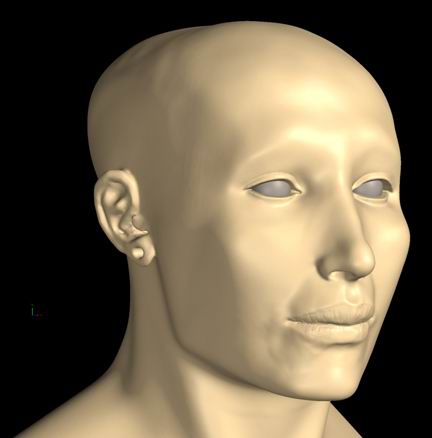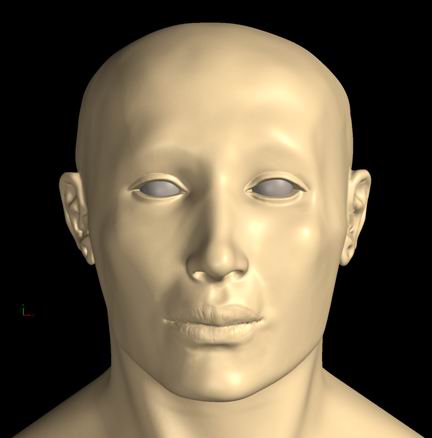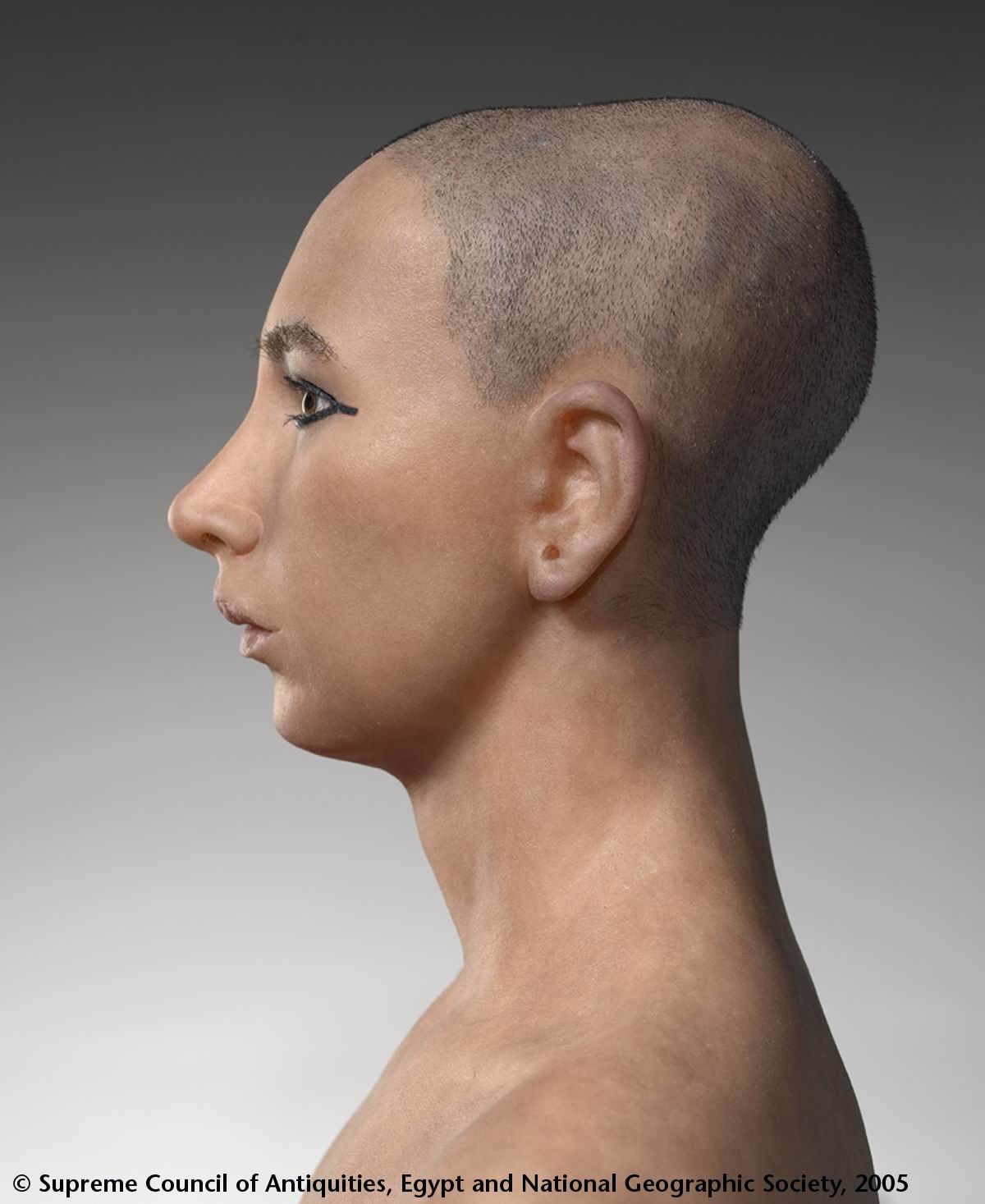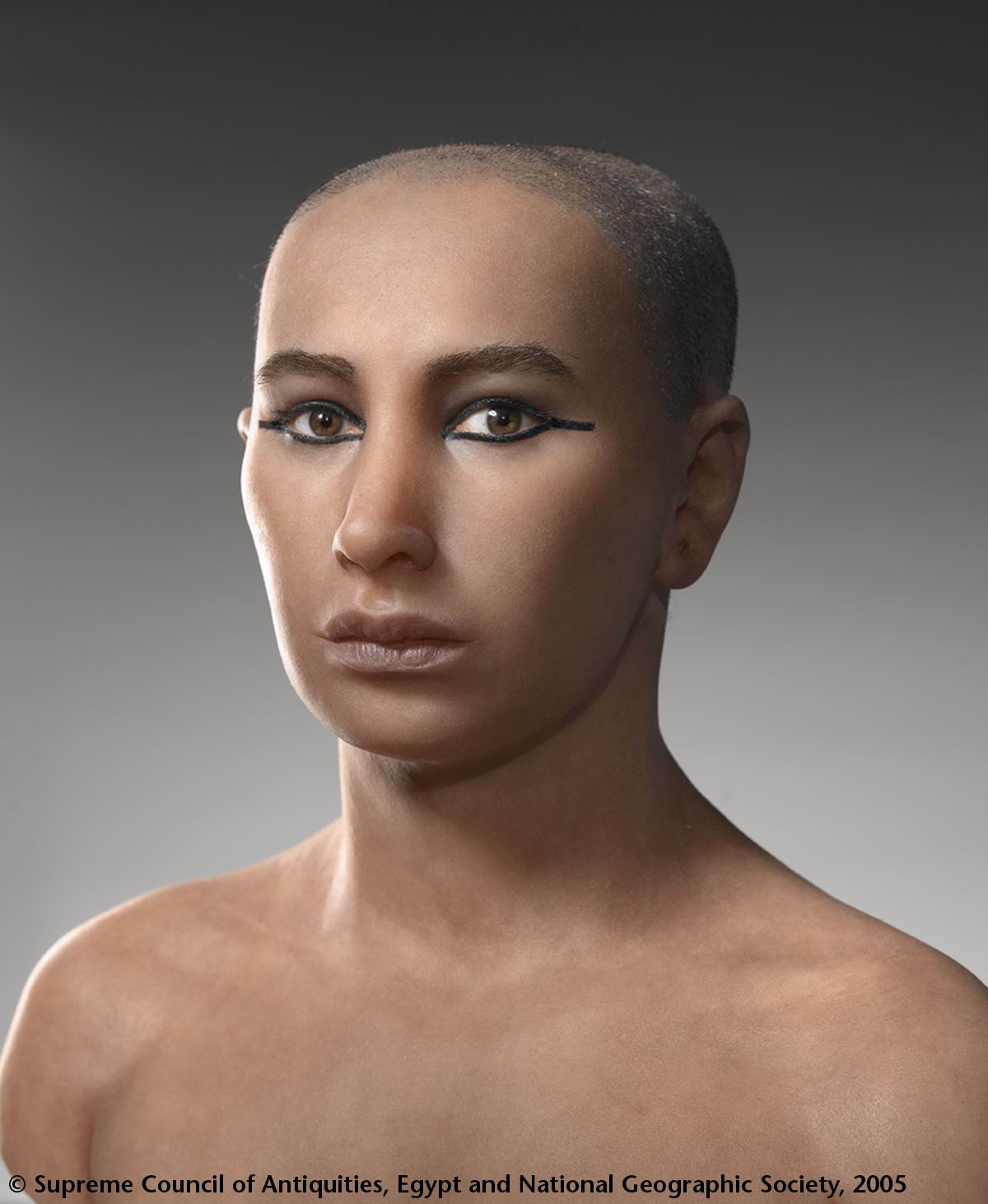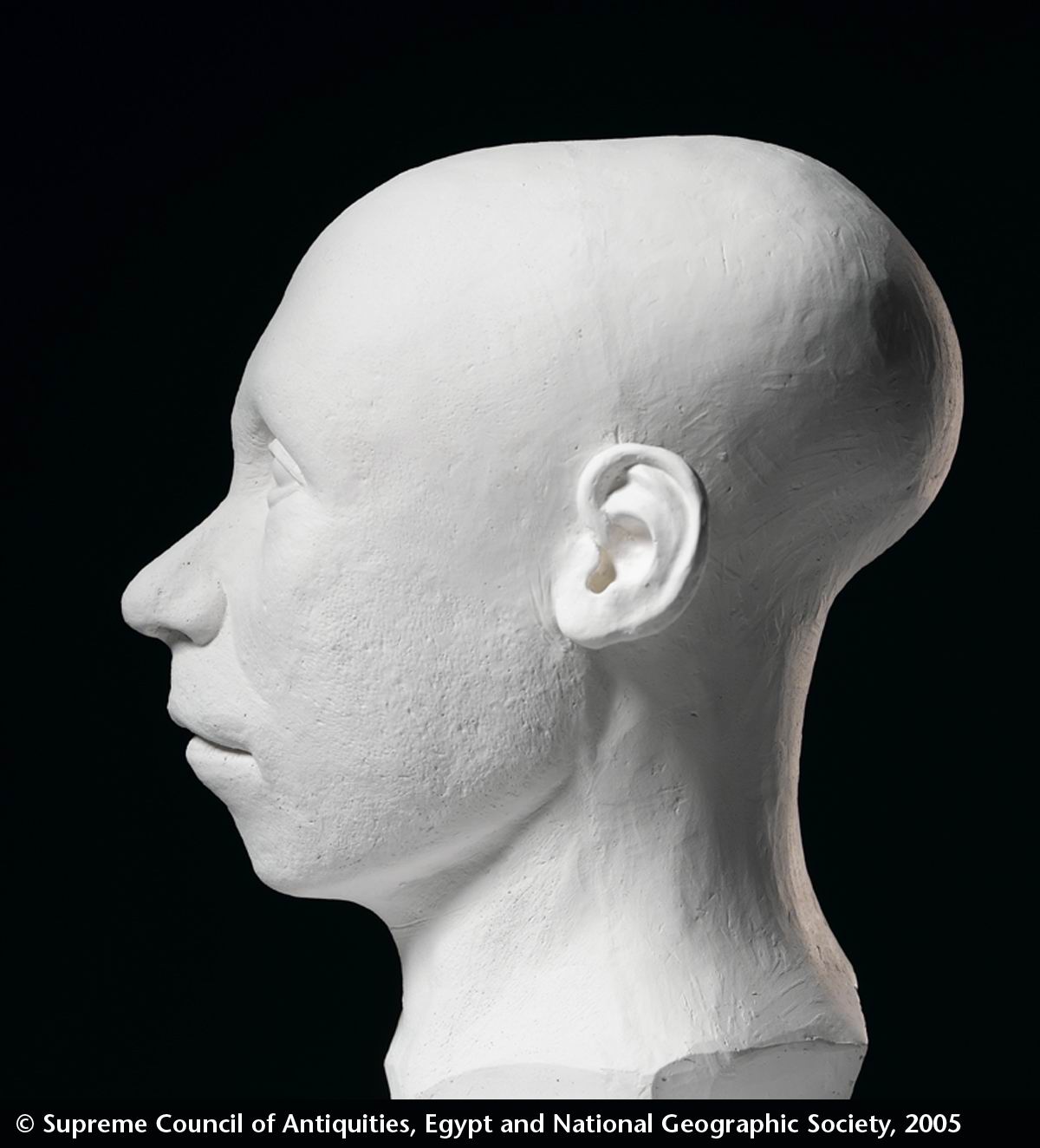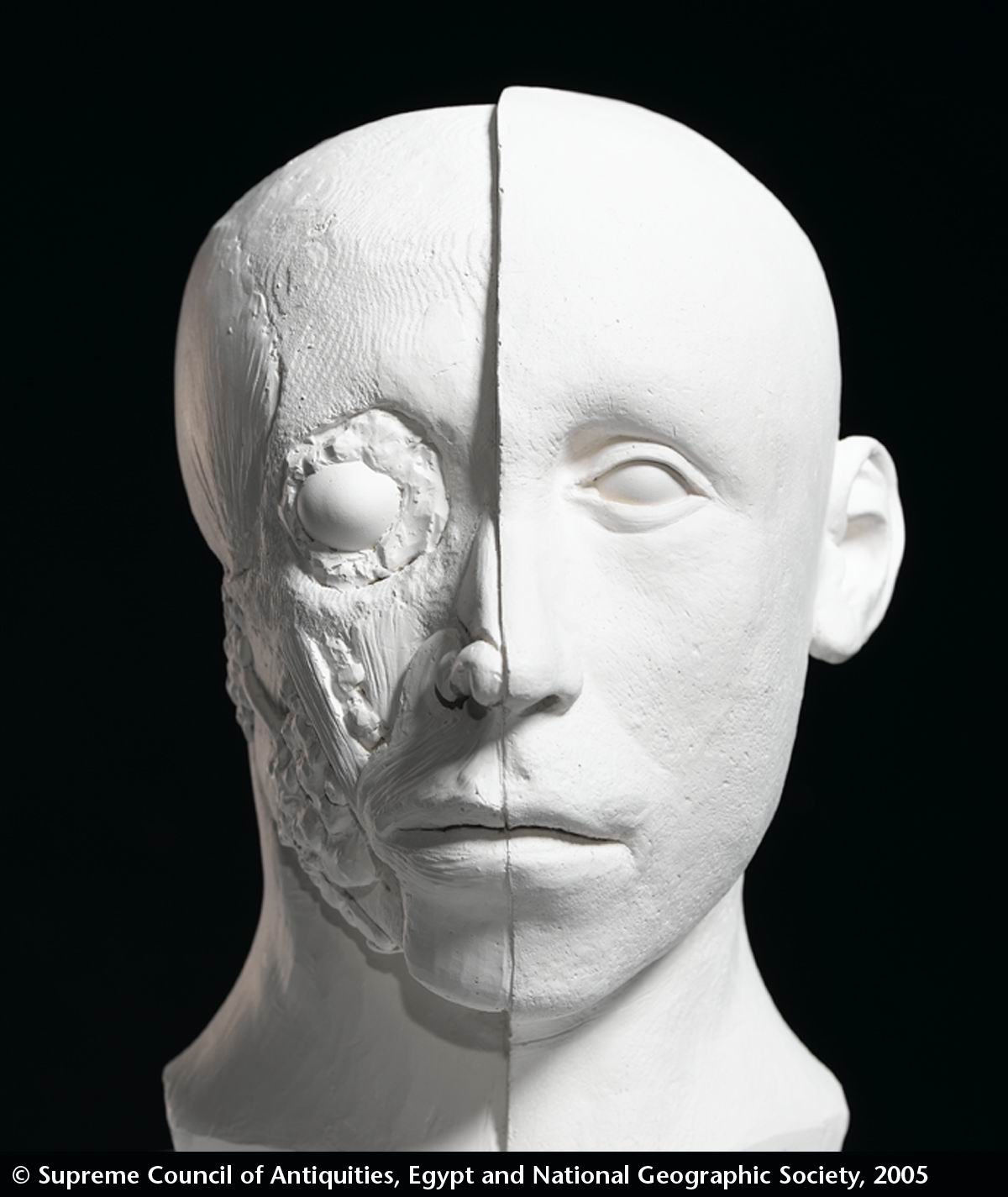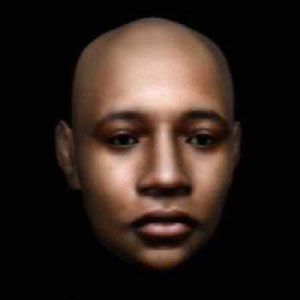Tutankhamun Facial Reconstruction
Dr. Zahi Hawass, Secretary General of Egypt’s Supreme Council of Antiquities, announced today the results of three independent attempts to reconstruct the face of Egypt’s most famous king, Tutankhamun.
Reconstruction by the Egyptian Team
Dr. Hawass led the effort to see what King Tut, who died over three thousand years ago, might have looked like in life. Under his direction three independent artist-scientist teams, one French, one American, and one Egyptian, used modern forensic techniques to reconstruct Tut’s face. Two of these teams were chosen and sponsored by the National Geographic; the third was selected by the SCA. The French and Egyptian teams were told that the subject was Tutankhamun. The American team was not given the subject’s identity and was thus working “blind.”
Reconstruction by the Egyptian Team
These likenesses are based on CT scan data collected by an all-Egyptian team, led by Dr. Hawass, using a portable CT scanner provided by the National Geographic Society and Siemens AG. The scan took place on January 5, 2005, in the Valley of the Kings in Luxor. The fragile body of the king, which had lain undisturbed since it was last X-rayed in 1978, was carefully carried to the scanner inside the wooden tray of sand in which Carter had left it in 1926. The CT scan was able, with minimum disturbance of the mummy, to distinguish different densities of soft tissue and bone. During the scan over 1,700 high-resolution images were captured; these were then used to create three-dimensional models, both virtual and actual.
Results from the analysis of the CT scan were announced on March 5 of this year. The scientific team concluded that Tutankhamun was about 19 when he died. He was well-fed, and showed no signs of childhood diseases or malnutrition. The team found no signs of a blow to the head, as had been theorized based on X-rays taken in 1968, and no other evidence for foul play. They did note a bad fracture just above the left knee that may have occurred a day or two before the king died (rather than being caused by the embalmers or Carter’s team). “It is possible that this injury became infected and killed the king,” says team leader Zahi Hawass.
Reconstruction by the American Team
All three teams started with the CT data provided by the SCA. The American and French teams were given a plastic model of the skull produced in Paris; the Egyptian team made their own model directly from the data. Based on this skull, the American and French teams both concluded that the subject was Caucasoid (the type of human typically found, for example, in North Africa, Europe, and the Middle East). The American team, working blind, correctly identified the subject as North African.
Based on the racial type, the teams added clay to the plastic models and used these as a guide to sculpt the features. The French and Egyptian sculptors also made reference to ancient images of Tutankhamun. When her clay model was complete, the French sculptor made a silicone cast and, based on the archaeological information, added glass eyes, hair, and color to the skin and lips.
The results of the three teams are identical or very similar in the basic shape of the face, the size, shape, and setting of the eyes, and the proportions of the skull. The primary differences are in the shape of the end of the nose and ears. “In my opinion, the shape of the face and skull are remarkably similar to a famous image of Tutankhamun as a child, where he is shown as the sun god at dawn rising from a lotus blossom,” says Dr. Hawass. This is confirmation that the science and techniques of forensic reconstruction can be a useful tool for reconstructing the likenesses of people who lived long ago.
The team of radiologists will start next month on the process of identifying another five mummies that were also scanned on January 5, 2005. These are the mummy of a child from the tomb of Tuthmosis IV, an unidentified mummy from the tomb of Seti II, and three mummies found in a side chamber in the tomb of Amenhotep II (an older woman, a youth, and a third mummy recently speculated to be Queen Nefertiti). This work will be carried out as part of the Egyptian Mummy Project, a five-year study led by Dr. Hawass to inventory and scan all of the known mummies in Egypt.
The project will continue to inventory the non-royal mummies in Egypt. No one knows how many of these there are, as they lie scattered at sites and in museums and storage magazines all over the country. These mummies, which include those from the Valley of the Golden Mummies, will be classified and scanned.
The final stage of the project will be the scanning of the royal mummies now exhibited at the Cairo Museum. The Supreme Council of Antiquities is currently building a National Museum of Egyptian Civilization in Fustat City in Old Cairo. The royal mummies from the Cairo Museum will be exhibited individually, each with a display explaining the history of the king and his period. Each pharaoh will be accompanied by images from his CT scan and a reconstruction of his face. “For the first time, we will make these dead mummies come alive,” says Dr. Hawass.
Dr. Zahi Hawass adds that. “The Egyptian team is led by Dr. Khaled G. El-Said, a biomedical engineer based in Boston who makes medical models. Using the CT data made a model of the skull of King Tut. Then with the assistance of a detective from Boston, his team also made a reconstruction of the face.
The three reconstructions (French, America and Egyptian) are all very similar in the unusual shape of the skull, the basic shape of the face, and the size, shape and setting of the eyes. The noses of all thee are different, although the French and the American versions are more similar to each other than the Egyptian.
Also, the chin is similar in the American and the French reconstructions; the Egyptian reconstruction has a stronger jaw and chin.
In my opinion as a scholar, the Egyptian reconstruction looks the most Egyptian, and the French and American versions have more unique personalities.
Reconstruction Teams:
Egyptian team:
Khaled Elsaid, biomedical engineer and team leader
French team:
Jean-Noël Vignal, forensic expert, Institut de Recherche Criminelle de la Gendarmerie Nationale, Paris
Elisabeth Daynes, anthropological sculptor, Atelier Daynes, Paris
American team:
Susan Antón, physical anthropologist, New York University, New York City







 ?
?




